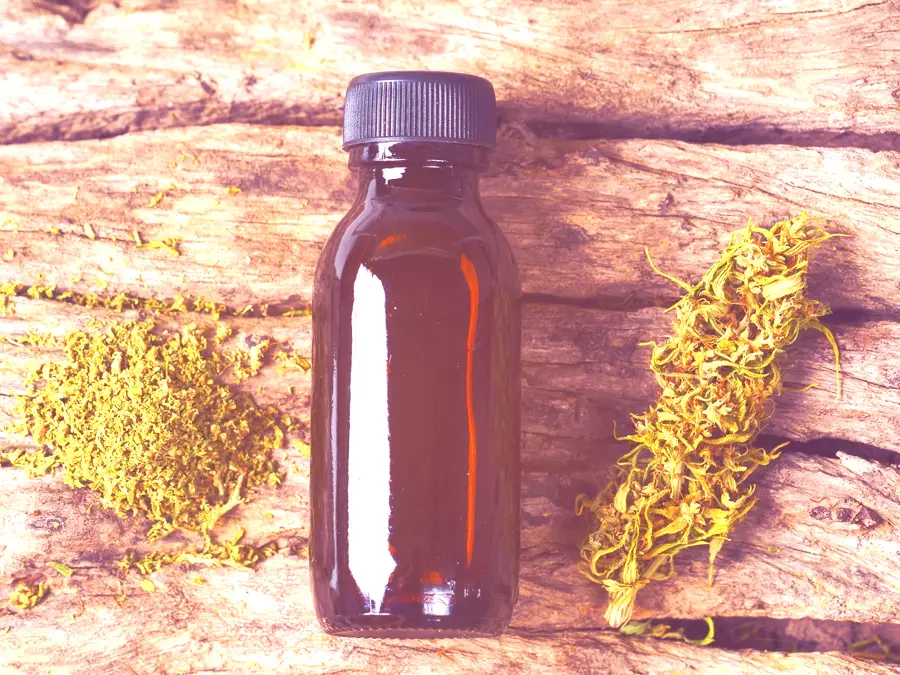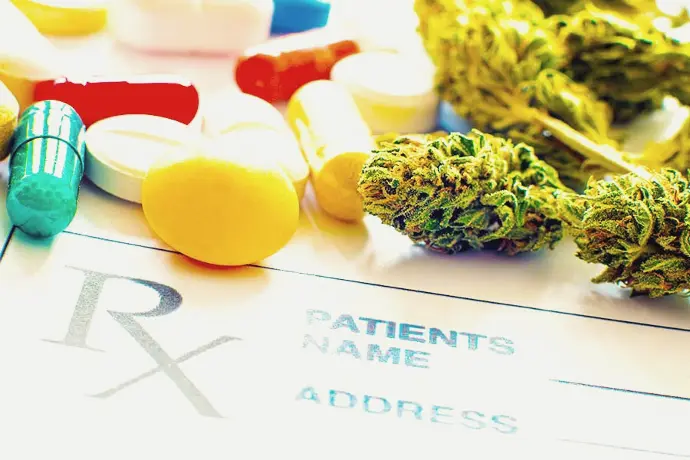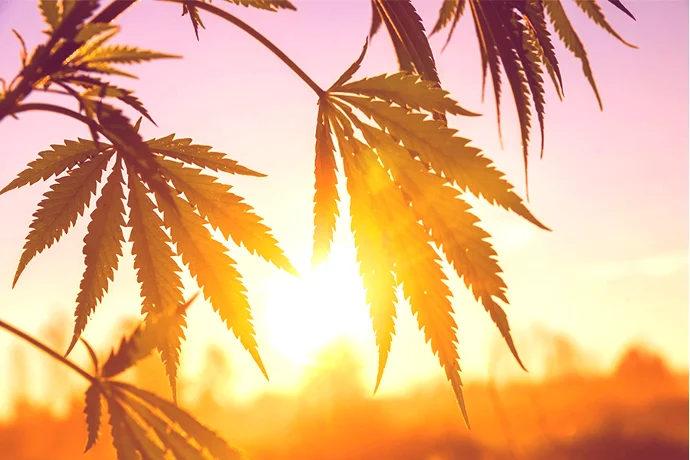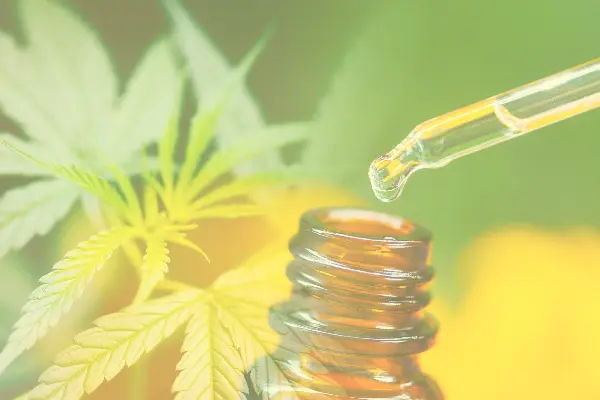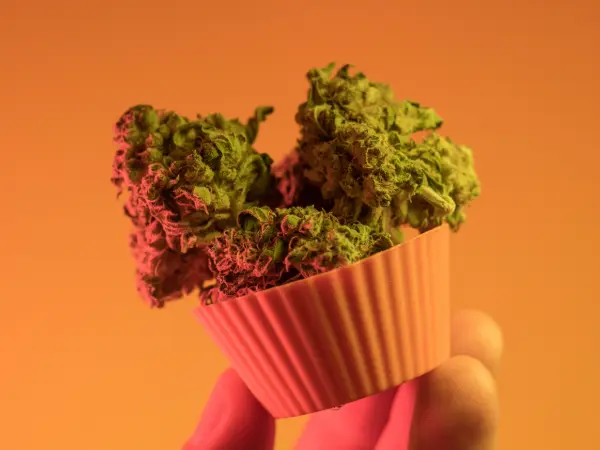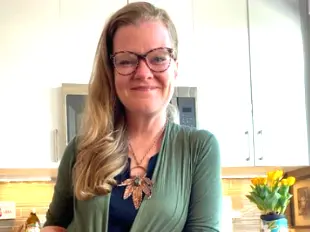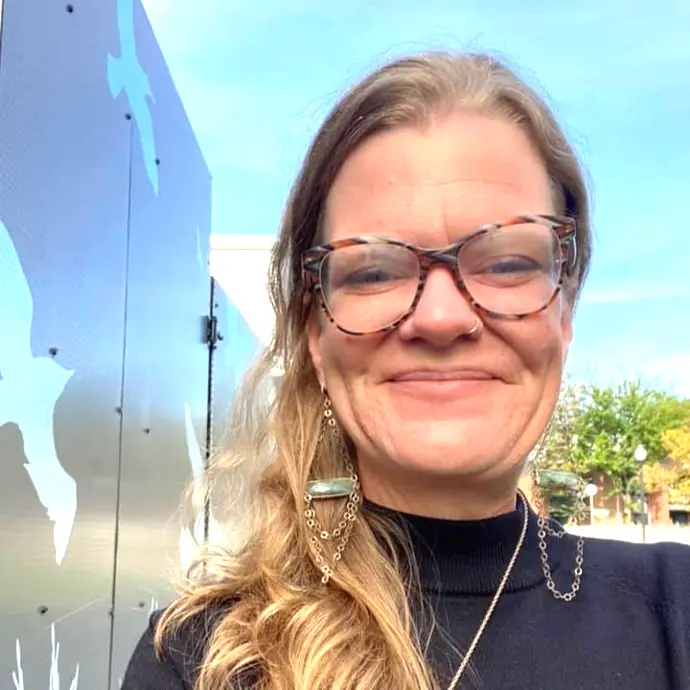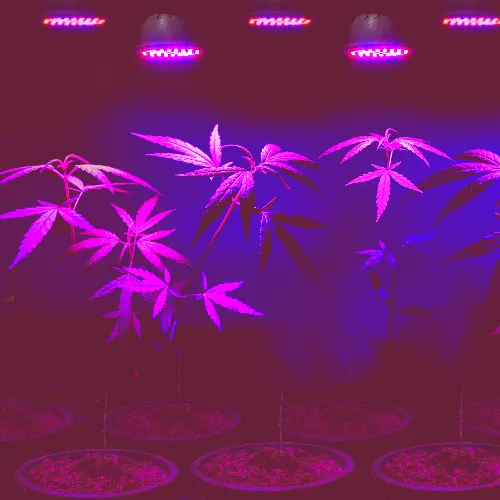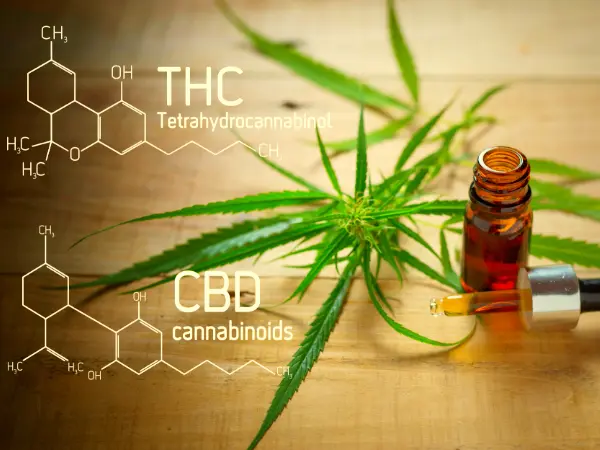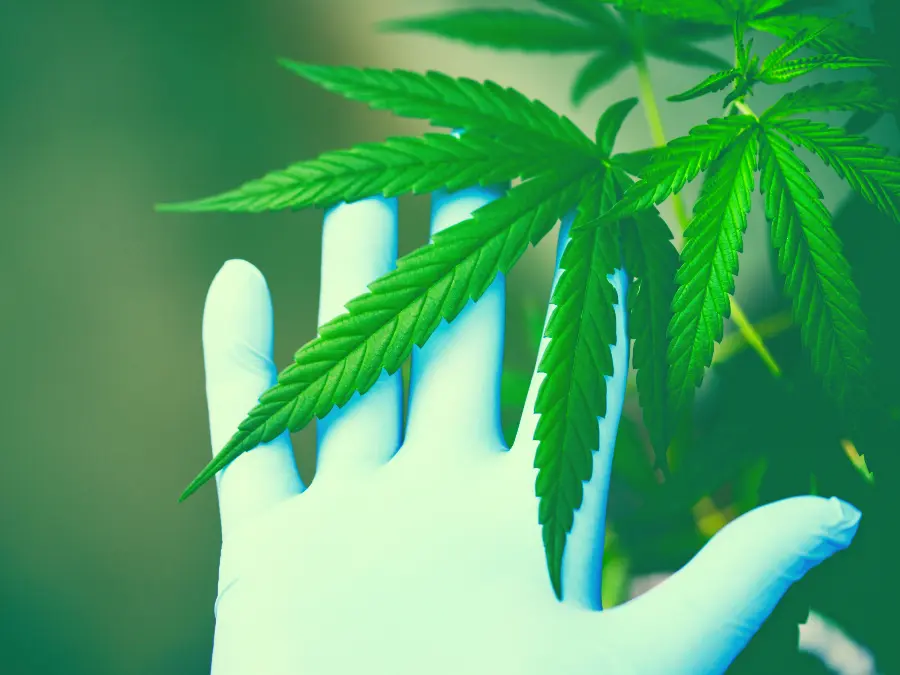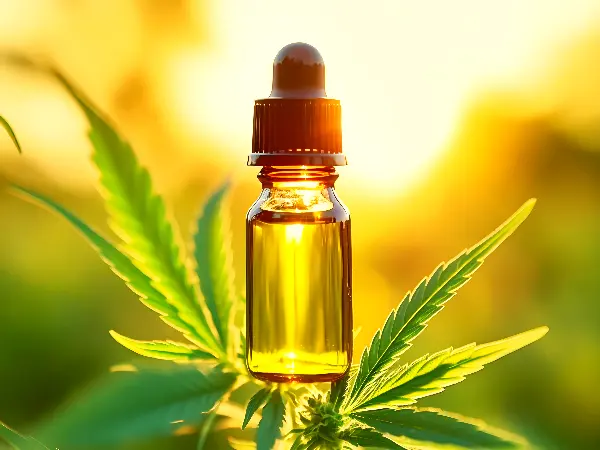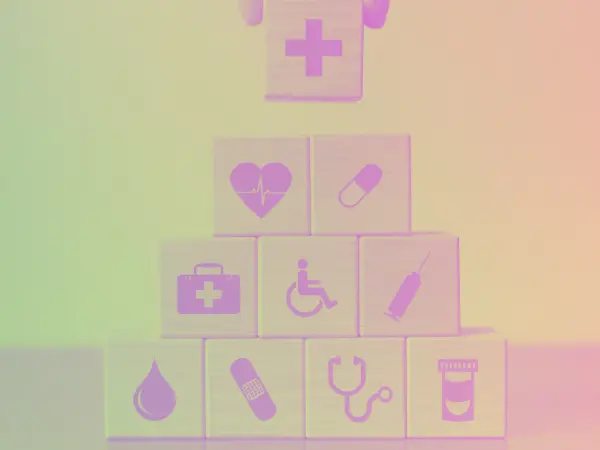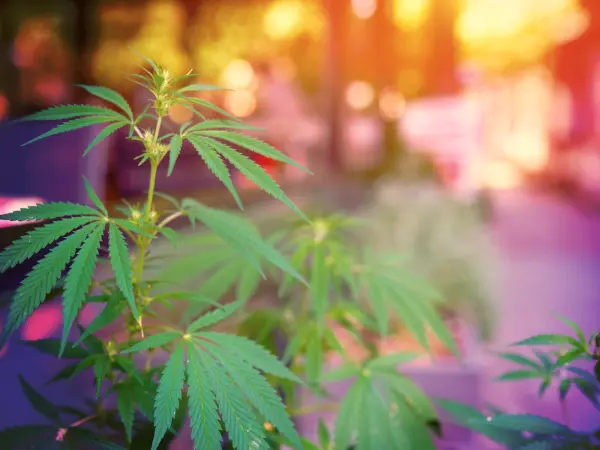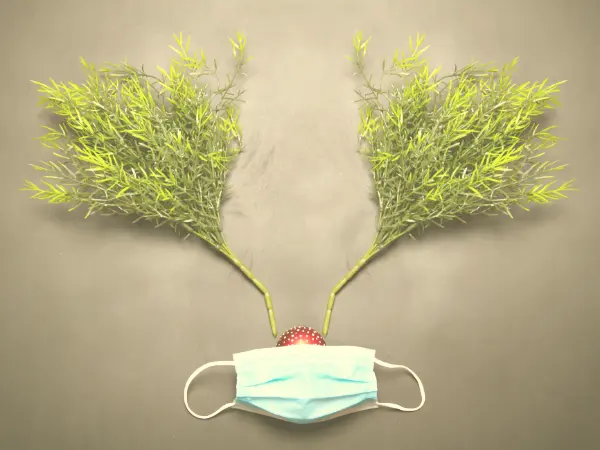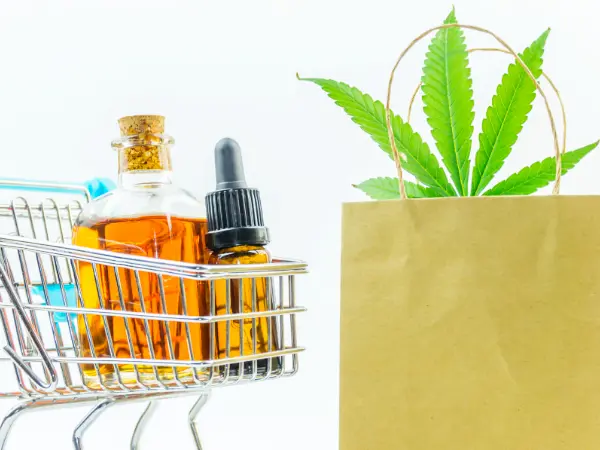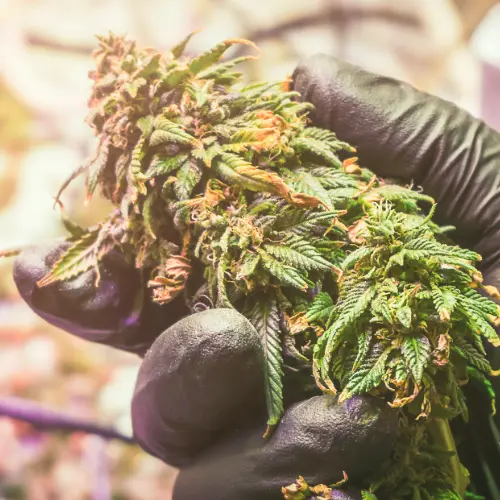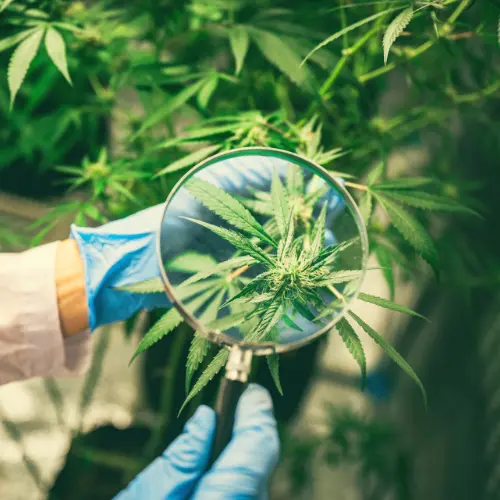Introduction
Brief overview of the opioid crisis
The opioid epidemic has been growing at an alarming rate in Massachusetts and across the United States. Overdose death rates have been increasing year by year, with stark racial and ethnic disparities among the victims. In Massachusetts, 93% of the overdoses reported in 2022 involved fentanyl, while 5% involved the concerning new drug xylazine. Males and younger individuals between the ages of 25 and 44 are bearing the brunt of these overdose deaths.
The opioid crisis has been exacerbated by the War on Drugs, which has taken a significant toll on communities and individuals struggling with addiction. The criminalization of substance use has made it more difficult for people to seek help and has led to an increase in overdoses as individuals turn to street drugs that are often contaminated with dangerous substances like fentanyl. In light of this growing epidemic, there is a pressing need for innovative solutions that are tailored to the individual needs, desires, and medical histories of those affected.
The growing interest in cannabis as a harm reduction tool
As the opioid crisis continues to ravage communities, there has been a growing interest in exploring the potential of cannabis as a harm reduction tool. Medical cannabis has been shown in clinical and public health settings to play a role in reducing the use of more harmful substances, such as opioids, alcohol, and tobacco. While cannabis is not a panacea, it has been consistently reported by patients and consumers to improve their quality of life and help them manage various health conditions.
The idea of using cannabis as an alternative to opioids has gained traction in recent years, with some states even implementing programs that allow individuals to substitute their opioid prescriptions with medical cannabis. This approach is rooted in the concept of harm reduction, which aims to minimize the negative consequences associated with substance use rather than solely focusing on abstinence. As more research emerges on the potential benefits of cannabis in managing pain, anxiety, and other conditions that often lead to opioid use, there is a growing need to explore how this plant can be integrated into comprehensive strategies to address the opioid epidemic.
The opioid epidemic in Massachusetts and nationally
Increasing overdose death rates
The opioid epidemic has been a growing concern both in Massachusetts and across the United States. In recent years, overdose death rates have been steadily increasing, highlighting the severity of the crisis. The COVID-19 pandemic has further exacerbated the situation, with social isolation, economic hardship, and reduced access to support services contributing to a surge in opioid-related deaths. This alarming trend underscores the urgent need for effective interventions and harm reduction strategies to combat the opioid crisis and save lives.
Racial and ethnic disparities in overdose deaths
One of the most troubling aspects of the opioid epidemic is the stark racial and ethnic disparities in overdose deaths. Studies have shown that Black and Hispanic communities have been disproportionately affected by the crisis, with higher rates of opioid-related deaths compared to their white counterparts. These disparities are rooted in systemic inequities, including limited access to healthcare, socioeconomic disadvantages, and the criminalization of substance use. Addressing these disparities requires a concerted effort to promote health equity and dismantle the structural barriers that perpetuate these unjust outcomes.
Presence of fentanyl and other dangerous substances in street drugs
The opioid epidemic has been further complicated by the increasing presence of fentanyl and other dangerous substances in street drugs. Fentanyl, a synthetic opioid that is 50 to 100 times more potent than morphine, has been linked to a significant number of overdose deaths in recent years. In Massachusetts, 93% of the overdoses reported in 2022 involved fentanyl. Additionally, the emergence of novel psychoactive substances like xylazine, which was present in 5% of overdoses in Massachusetts in 2022, has added another layer of complexity to the crisis. These highly potent and often unpredictable substances pose a grave risk to individuals who use drugs, making it even more challenging to prevent overdoses and protect public health.
The role of the War on Drugs in exacerbating the opioid crisis
The War on Drugs, a long-standing policy approach that emphasizes criminalization and punishment over public health and harm reduction, has played a significant role in exacerbating the opioid crisis. By treating substance use as a criminal issue rather than a health concern, the War on Drugs has created a stigma around addiction, making it harder for individuals to seek help and access evidence-based treatment. Moreover, the criminalization of drug use has disproportionately affected communities of color, leading to mass incarceration and the destruction of families and social networks. This punitive approach has also driven substance use underground, making it more difficult to monitor and regulate the drug supply, thereby increasing the risk of overdose and other harms associated with unregulated substances.
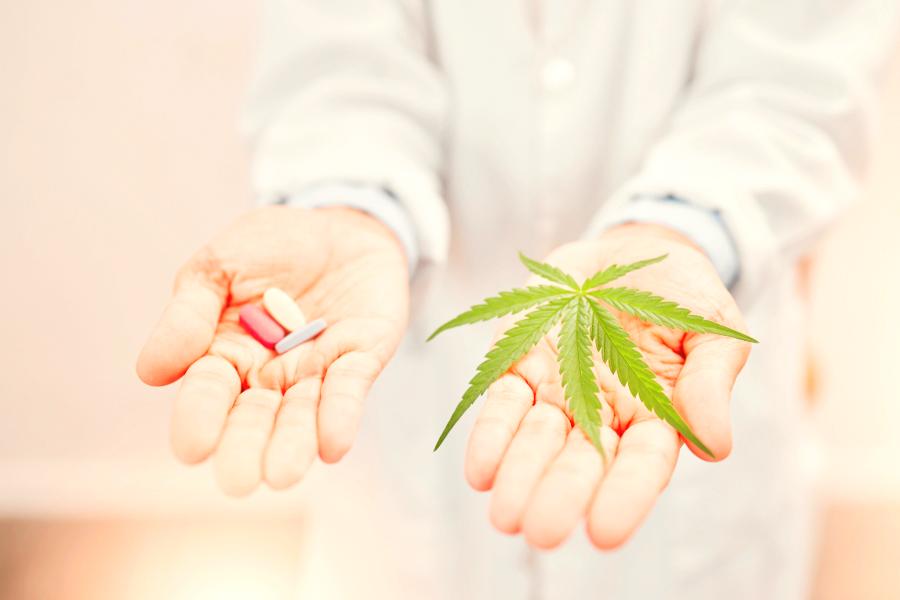
The need for innovative solutions tailored to individual needs
Given the complex nature of the opioid epidemic and the limitations of traditional approaches, there is a pressing need for innovative solutions that are tailored to the unique needs and circumstances of individuals affected by the crisis. This requires a shift away from a one-size-fits-all approach and towards personalized interventions that take into account an individual's medical history, co-occurring mental health conditions, social determinants of health, and personal preferences. By prioritizing patient-centered care and harm reduction strategies, we can more effectively address the root causes of substance use and support individuals in their journey towards recovery and improved quality of life. This may involve integrating a range of evidence-based approaches, such as medication-assisted treatment, behavioral therapies, and complementary and alternative medicine, including medical cannabis, to provide a comprehensive and individualized response to the opioid crisis.
Existing Evidence on Cannabis as a Harm Reduction Alternative
Clinical frameworks and state adoption of medical cannabis for opioid cessation or reduction
Growing recognition of cannabis as a potential tool for harm reduction in the context of the opioid epidemic
In recent years, there has been a growing recognition of the potential role that cannabis can play as a harm reduction tool in the context of the opioid epidemic. As more research emerges on the therapeutic properties of cannabis, particularly its ability to manage pain, reduce inflammation, and alleviate symptoms of anxiety and depression, healthcare professionals and policymakers are increasingly considering the incorporation of medical cannabis into clinical frameworks for opioid cessation or reduction. This shift in perspective is driven by the urgent need to find alternative approaches to address the opioid crisis, given the limitations and adverse effects associated with traditional pharmaceutical interventions.
Adoption of medical cannabis programs by various states to address the opioid crisis
In response to the growing body of evidence supporting the use of cannabis as a harm reduction strategy, several states have taken steps to adopt medical cannabis programs specifically designed to address the opioid crisis. These programs often allow individuals with opioid use disorder or those at risk of developing opioid dependence to access medical cannabis as an alternative to prescription opioids. By providing a legal and regulated framework for the use of cannabis in the context of opioid management, these states aim to reduce the harms associated with opioid use, prevent overdoses, and support individuals in their efforts to reduce or cease opioid consumption.
Integration of cannabis into comprehensive treatment plans for individuals with opioid use disorder
As the evidence base for the therapeutic potential of cannabis continues to grow, healthcare providers are increasingly considering the integration of medical cannabis into comprehensive treatment plans for individuals with opioid use disorder. This approach recognizes that cannabis can serve as a valuable adjunct to other evidence-based interventions, such as medication-assisted treatment and behavioral therapies. By incorporating cannabis into a holistic treatment framework, providers aim to address the complex range of physical, psychological, and social factors that contribute to opioid use disorder, ultimately promoting recovery and improving overall quality of life for affected individuals.
Dr. McNabb's research studies on cannabis use among veterans:
Findings from Dr. McNabb's research on the use of cannabis as a substitute for prescription medications, alcohol, and tobacco among veterans
Dr. Marion McNabb, President of the Cannabis Center of Excellence, has conducted several research studies investigating the use of cannabis among veteran populations. One notable study, published in the Journal of Clinical Therapeutics, involved a cross-sectional survey of a national sample of veterans, with a large representation from Massachusetts. The findings from this study revealed that over half of the participants reported using cannabis as a substitute for prescription medications, while 46% reported using less alcohol and 24% reported using less tobacco as a result of their cannabis use. These results suggest that cannabis may serve as a viable alternative to potentially harmful substances, offering veterans a means to manage their health conditions and improve their overall well-being.
Factors associated with veterans' desire to reduce prescription medication use through cannabis consumption
Further analysis of Dr. McNabb and the team's study data revealed specific factors associated with veterans' desire to reduce their prescription medication use through cannabis consumption. The logistic regression analysis showed that veterans who were Black, female, had served in active combat, and those living with chronic pain were two or more times more likely to express a desire to reduce their prescription medication use by substituting with cannabis. Additionally, women and individuals who used cannabis daily were found to be 3 times and 2.3 times more likely, respectively, to actively use cannabis as a means to reduce their prescription medication consumption. These findings highlight the potential of cannabis as a harm reduction tool, particularly among vulnerable subgroups within the veteran population who may be disproportionately affected by the adverse effects of prescription medications.
The non-lethal nature of cannabis compared to other substances:
Cannabis as a safer alternative to opioids, alcohol, and tobacco in terms of overdose risk and overall toxicity
One of the key arguments in favor of cannabis as a harm reduction tool is its non-lethal nature compared to other commonly used substances, such as opioids, alcohol, and tobacco. Cannabis has a significantly lower risk of overdose compared to opioids, which have been responsible for a staggering number of deaths in the ongoing epidemic. Moreover, while alcohol and tobacco use are associated with a wide range of detrimental health effects and contribute to millions of deaths annually, the overall toxicity of cannabis is considered to be much lower. This relative safety profile makes cannabis an appealing alternative for individuals seeking to reduce their use of more harmful substances, as it may help mitigate the risks of overdose and long-term health complications.
The importance of considering the relative harms of cannabis in the context of substance use and harm reduction strategies.
When evaluating the potential of cannabis as a harm reduction tool, it is crucial to consider the relative harms associated with its use in comparison to other substances. While cannabis is not without its own set of risks and potential adverse effects, such as the potential for dependence and the exacerbation of certain mental health conditions, these harms are generally considered to be less severe than those associated with opioids, alcohol, and tobacco. By taking a nuanced approach that acknowledges the relative harms of different substances, policymakers and healthcare providers can make informed decisions about the role of cannabis in harm reduction strategies, prioritizing interventions that minimize overall harm and promote public health.
Cannabis as an Alternative for Harm Reduction Study
Objectives and methodology of the study
The "Cannabis as an Alternative" study, led by Dr. Marion McNabb and Dr. Peter Grinspoon, aimed to investigate how cannabis consumers and patients use cannabis to reduce the unwanted use of other substances, including prescription drugs, alcohol, tobacco, and recreational street drugs. This groundbreaking research sought to provide valuable insights into the potential of cannabis as a harm reduction tool in the context of the ongoing opioid epidemic. The study employed a cross-sectional, national population-based survey design, collecting data from cannabis consumers and patients who had either used medical cannabis to reduce substance use in the past, were currently using it for that purpose, or were interested in learning more about this approach.
To ensure a diverse and representative sample, the study utilized convenience sampling methods to recruit participants from across the United States. Data collection took place between August and November 2022, capturing a wide range of experiences and perspectives on the use of cannabis as an alternative to other substances. By employing a rigorous methodology and a patient-centered approach, the "Cannabis as an Alternative" study aimed to contribute to the growing body of evidence surrounding the therapeutic potential of cannabis and its role in harm reduction strategies.
Demographics of the study participants
The "Cannabis as an Alternative study" included a diverse sample of 586 respondents from across the United States. Among the study participants, a significant proportion (41%) reported having experienced homelessness in the past, while 28% indicated that they were currently homeless. This representation of individuals with a history of housing instability highlights the study's commitment to capturing the experiences of vulnerable populations who may be disproportionately affected by substance use and related harms. Additionally, 38% of the respondents were military veterans, and 28% self-identified as disabled, further emphasizing the study's focus on understanding the unique needs and perspectives of individuals who may benefit from alternative approaches to managing their health and well-being.
The study sample also exhibited diversity in terms of race
and ethnicity, with participants identifying as White, Black, Hispanic,
and other racial/ethnic backgrounds. The age distribution of the
respondents showed a concentration in the 20-39 age range, suggesting
that the study captured the experiences of a relatively young adult
population. Notably, over 53% of the participants reported having been
diagnosed with or faced an opioid use disorder, underscoring the
relevance of the study in the context of the ongoing opioid epidemic and
the potential of cannabis as a harm reduction tool for individuals
struggling with opioid use.
Key findings
Cannabis use as an alternative therapy for various health conditions.
One of the key findings of the "Cannabis as an Alternative" study was the widespread use of cannabis as an alternative therapy for a range of health conditions. An impressive 76% of the study participants reported having used cannabis as an alternative treatment for health conditions or symptoms either currently or in the past. This high prevalence of cannabis use for therapeutic purposes highlights the growing recognition of cannabis as a potential tool for managing a variety of health concerns. Among the most commonly reported conditions for which cannabis was found to be helpful were depression, anxiety, PTSD, nausea, vomiting, migraines, insomnia, and ADHD. These findings suggest that cannabis may offer a promising alternative or complementary approach to managing mental health conditions, neurological disorders, and other chronic health issues.
The study's findings regarding the therapeutic use of cannabis are particularly relevant in the context of the ongoing opioid epidemic, as many individuals who struggle with opioid use disorder also experience co-occurring mental health conditions and chronic pain. By demonstrating the potential of cannabis to alleviate symptoms associated with these conditions, the "Cannabis as an Alternative" study underscores the importance of considering cannabis as part of a comprehensive, patient-centered approach to harm reduction and substance use management. These findings also highlight the need for further research to better understand the mechanisms underlying the therapeutic effects of cannabis and to develop evidence-based guidelines for its use in clinical practice.
Which health conditions do you find cannabis to be helpful in treating?
Reduction in prescription medication use with cannabis.
Another significant finding from the "Cannabis as an Alternative" study was the reported reduction in prescription medication use among participants who used cannabis as an alternative therapy. The study revealed that 52% of the participants were currently taking medications for their health conditions and symptoms. However, when asked about the impact of cannabis use on their prescription medication consumption, respondents reported a decrease in the use of various types of medications, including over-the-counter drugs, antidepressants, mood stabilizers, muscle relaxers, anti-migraine medications, beta blockers, sedatives, statins, benzodiazepines, and stimulants. These findings suggest that cannabis may serve as a viable substitute for prescription medications, potentially reducing the risk of adverse side effects and dependence associated with long-term pharmaceutical use.
The reduction in prescription medication use among cannabis consumers has significant implications for public health and healthcare policy. By demonstrating the potential of cannabis to replace or reduce the use of prescription drugs, the study highlights the need for a more comprehensive and integrative approach to medication management, one that considers the role of cannabis as a complementary or alternative therapy. This finding also underscores the importance of patient education and informed decision-making, as individuals should be provided with accurate information about the potential benefits and risks of cannabis use in the context of their specific health conditions and medication regimens. Furthermore, the study's results suggest that healthcare providers should be equipped with the knowledge and skills necessary to discuss cannabis use with their patients and to incorporate it into personalized treatment plans when appropriate.

Subset of participants actively reducing opioid use with cannabis:
Which narcotics/opioids are you actively reducing with the use of cannabis?
Cannabis as a self-treatment for opioid use disorder
The "Cannabis as an Alternative" study also shed light on the use of cannabis as a self-treatment option for individuals with opioid use disorder (OUD). Among the study participants, 53% reported having been formally diagnosed with OUD either currently or in the past. Notably, 69% of these individuals indicated that they had used cannabis to self-treat their OUD or to reduce their opioid use, while an additional 12% expressed an interest in learning more about this approach. These findings highlight the potential of cannabis as a harm reduction tool for individuals struggling with opioid dependence, as it may offer a means to manage withdrawal symptoms, reduce cravings, and ultimately decrease opioid consumption.
The study participants reported using cannabis to reduce their use of a wide range of opioids, including fentanyl, codeine, morphine, buprenorphine, heroin, hydrocodone, oxycodone, and methadone. The inclusion of buprenorphine and methadone in this list is particularly noteworthy, as these medications are commonly used in medication-assisted treatment (MAT) for OUD. The fact that some individuals are using cannabis to reduce their use of these medications suggests that cannabis may have a role to play in supporting individuals who are undergoing MAT or seeking to transition off of these treatments. However, it is crucial to emphasize that more research is needed to fully understand the safety and efficacy of cannabis as an adjunct or alternative to established OUD treatments, and individuals should work closely with their healthcare providers to make informed decisions about their care.
Reduction in the use of other substances, including tobacco, alcohol, and recreational drugs
In addition to the impact on opioid use, the "Cannabis as an Alternative" study also investigated the potential of cannabis to reduce the use of other substances, such as tobacco, alcohol, and recreational drugs. The findings revealed that a significant proportion of the study participants had successfully used cannabis as a substitute for these substances:
Are you actively or have you ever reduced the use of any of the following substances with the use of cannabis?
- 62% of participants reported using cannabis to reduce their tobacco use.
- 58% of participants reported using cannabis to reduce their alcohol consumption.
- Participants also reported using cannabis to reduce their use of various recreational drugs, including cocaine, crack cocaine, DMT, LSD, kratom, and MDMA.
These results suggest that cannabis may have broad potential as a harm reduction tool, extending beyond its application in the context of opioid use. By offering an alternative to substances that are associated with significant health risks and social harms, cannabis may help individuals to reduce their overall substance use and improve their quality of life.
The study's findings regarding the use of cannabis to reduce tobacco and alcohol consumption are particularly relevant from a public health perspective. Tobacco use remains a leading cause of preventable death worldwide, while alcohol use is associated with a wide range of health problems, including liver disease, cardiovascular disease, and certain types of cancer. By highlighting the potential of cannabis to help individuals reduce their use of these substances, the study underscores the need for further research to explore the mechanisms underlying these effects and to develop evidence-based guidelines for the use of cannabis in tobacco and alcohol cessation programs.
Challenges and Opportunities
While the study and other research have highlighted the potential of cannabis as a harm reduction tool, it is important to acknowledge the challenges and opportunities associated with this approach. One of the primary challenges is the need for tailored, innovative solutions that address the complex nature of substance use disorders and the unique needs of individual patients. Cannabis is not a one-size-fits-all solution, and its use should be carefully considered in the context of each person's medical history, co-occurring conditions, and personal preferences. Furthermore, the legal and regulatory landscape surrounding cannabis use remains complex and varies widely across jurisdictions, which can create barriers to access and hinder research efforts.
Despite these challenges, there are also significant opportunities to integrate cannabis into clinical and public health programs aimed at addressing the opioid crisis and other substance use disorders. Some states, such as Illinois, have already implemented innovative programs that allow individuals to substitute their opioid prescriptions with medical cannabis, offering a promising model for other jurisdictions to consider. Additionally, the growing body of research on the therapeutic potential of cannabis has helped to reduce stigma and increase public support for its use in medical contexts. As more healthcare providers become educated about the benefits and risks of cannabis use, they will be better equipped to have informed conversations with their patients and to incorporate cannabis into personalized treatment plans when appropriate.
Dr. Peter Grinspoon's Insights
The concept of harm reduction and the relative safety of cannabis compared to other substances
Dr. Peter Grinspoon, a primary care physician and cannabis specialist, emphasizes the importance of harm reduction when considering the role of cannabis in addressing substance use disorders. He notes that while cannabis is not without risks, it is crucial to evaluate its potential benefits in the context of the harms associated with other substances. "Cannabis does have harms," Dr. Grinspoon acknowledges. "We're not sure that it's safe for pregnancy or breastfeeding, of course, as with a lot of other medications. It can trigger or worsen [symptoms in] people with psychosis and, you know, [with a] family history of psychosis. And teenagers can get really knocked off track and people can get addicted to cannabis."
However, Dr. Grinspoon argues that the relative safety of cannabis compared to other substances makes it a valuable tool for harm reduction. "It's all about harm reduction because clearly, by every metric, cannabis is safer than tobacco, it's safer than alcohol, it's obviously safer than opiates," he states. By focusing on the relative harms of different substances, rather than holding cannabis to an unrealistic standard of perfect safety, healthcare providers and policymakers can make informed decisions about its potential role in reducing the negative consequences of substance use.
The substitution effect: patients using cannabis to reduce the use of more harmful substances.
Benzodiazepines, sleeping medications, and pain management:
Dr. Grinspoon discusses the substitution effect, whereby patients use cannabis to reduce their reliance on more harmful substances, such as benzodiazepines, sleeping medications, and opioids. "Benzodiazepines - Valium, Klonopin, lorazepam, Xanax - can be really, really addictive. They can affect your memory, they can cause dementia. And many studies show that people use fewer benzodiazepines because cannabis is quite helpful for anxiety," he explains. Similarly, Dr. Grinspoon highlights the potential of cannabis to serve as a safer alternative to traditional sleeping medications, which can be addictive and cause unwanted side effects.
"Benzodiazepines - Valium, Klonopin, lorazepam, Xanax - can be really, really addictive. They can affect your memory, they can cause dementia. And many studies show that people use fewer benzodiazepines because cannabis is quite helpful for anxiety..."
-Dr. Peter Grinspoon
In the context of pain management, Dr. Grinspoon
emphasizes the relative risks associated with commonly prescribed pain
medications, such as opioids and non-steroidal anti-inflammatory drugs
(NSAIDs). "Opiates - not only is it the question of addiction and
overdose, they make you really constipated, which is a huge problem in
the elderly. I mean, people end up in the emergency room when they're
constipated. They make you dizzy, you can fall, you can have memory
loss," he explains. "And then there's non-steroidals - your Advil, your
ibuprofen, your Motrin, your Aleve. Now, 10,000 people - people think
these are as safe as many of them are over-the-counter, but in fact,
10,000 people a year die from heart attacks just from non-steroidals.
And then if you factor in all the bleeding that they cause, all the
ulcers, the gastritis, the bleeding ulcers, and then finally, if you
factor in the kidney damage - I mean, I have so many patients of mine in
their 50s, 60s, 70s whose kidneys are slowly dying, which is a really,
really big deal, because they've taken ibuprofen after ibuprofen." By
comparing the risks of these medications to the relative safety of
cannabis, Dr. Grinspoon highlights the potential of cannabis to serve as
a harm reduction tool in the management of chronic pain.
The challenges of the current scheduling system and the need for de-scheduling cannabis
Dr. Grinspoon addresses the challenges posed by the current scheduling system, which classifies cannabis as a Schedule I substance, indicating a high potential for abuse and no accepted medical use. He argues that this classification is not based on scientific evidence and hinders research efforts and patient access. "It is safer than tobacco, which kills 500,000 people a year. It's safer than alcohol, which - it just went up, I just wrote a blog about this in my Substack, [it] went up from 138,000 deaths a year to 172,000 deaths a year from alcohol alone. And cannabis kills about zero people per century in direct deaths," Dr. Grinspoon states.
Given the relative safety of cannabis compared to other substances, Dr. Grinspoon advocates for the descheduling of cannabis rather than its rescheduling to a lower schedule. "I think it'll help with research. It would help because it symbolically, you know, to help more than anything else because the US government, which has been hounding people for cannabis use, arresting people, millions of people, throwing them in jail and just pretending it doesn't have medical uses, is finally - if they do reschedule it to Schedule III - going to be like admitting that it is a medicine, which many of us have known all along," he explains. However, he also notes that rescheduling cannabis to Schedule III would create an incoherent policy, as many states have already legalized cannabis for medical or recreational use, making it easier for individuals to access cannabis through legal channels than through the prescription process required for Schedule III substances.
The potential benefits and limitations of using cannabis in treating opioid use disorder
When discussing the potential role of cannabis in treating opioid use disorder (OUD), Dr. Grinspoon emphasizes the importance of considering the specific aspects of OUD that cannabis may be able to address. "You just can't - you have to treat a lot of the underlying conditions [that] fuel the opioid addiction, like the untreated anxiety or depression, which I think is in like 70% of people with addictions, or the insomnia or the anxiety. Or if you're treating chronic pain, many people with opioid addiction have chronic pain. You know, or if you're treating the opiate withdrawal symptoms," he explains.
While Dr. Grinspoon acknowledges the potential benefits of cannabis in addressing these aspects of OUD, he also notes the limitations of the current evidence base. "Now, the most complicated thing is like, you know, we have buprenorphine, which is also called Suboxone, and we have methadone. And for people who are addicted [to] opiates, those have been shown to result - the use of them has been shown to result in a 50 to 80% reduction in overdoses and deaths. And with cannabis, I know thousands of people that use cannabis to get off their opiates. But we don't have the same level of data," he explains. Given the strong evidence supporting the use of medications like buprenorphine and methadone in treating OUD, Dr. Grinspoon recommends using cannabis as an adjunct to these established treatments rather than as a standalone solution. However, he also emphasizes the need for further research to explore the potential of cannabis in reducing opioid overdoses and supporting individuals in their recovery from OUD.
Future Directions
The need for more balanced research on the benefits and harms of cannabis
As the conversation around cannabis as a harm reduction tool continues to evolve, Dr. Grinspoon and Dr. McNabb emphasize the need for more balanced research that investigates both the potential benefits and harms of cannabis use. Historically, research funding has been heavily skewed towards studying the adverse effects of cannabis, with little attention given to its therapeutic potential. "There was nothing - to get money to study cannabis, you had to show a drop in sperm count, a drop in IQ, a drop in motivation. Something had to drop or you wouldn't get funding," Dr. Grinspoon explains.
However, recent years have seen a shift towards more balanced research, with studies beginning to explore the potential benefits of cannabis in various medical contexts. Dr. Grinspoon notes that this shift is more pronounced in countries like Israel, Europe, and Canada, but is slowly gaining traction in the United States as well. By conducting rigorous, unbiased research on the full spectrum of cannabis's effects, scientists and healthcare professionals can gain a more comprehensive understanding of its potential role in harm reduction and develop evidence-based guidelines for its use.
The potential of understudied cannabinoids (e.g., CBG, CBDA) and the entourage effect
Dr. Grinspoon and Dr. McNabb also discuss the potential of understudied cannabinoids, such as cannabigerol (CBG) and cannabidiolic acid (CBDA), in the context of harm reduction and medical use. While most research to date has focused on the effects of tetrahydrocannabinol (THC) and cannabidiol (CBD), the cannabis plant contains hundreds of other compounds that may have therapeutic value. "I actually think there's a lot of potential in the acid cannabinoids. THCA - people talk about its health benefits, its anti-inflammatory benefits. I think we need to do a little bit more, a lot more study on it, and the same with CBGA," Dr. Grinspoon notes.
In addition to exploring the effects of individual cannabinoids, Dr. Grinspoon emphasizes the importance of understanding the entourage effect, whereby the various compounds in the cannabis plant work synergistically to produce therapeutic benefits. "The entourage effect just means that all the other 500 molecules or many of them, not all of them, work well with the THC to kind of synergistically produce an effect," he explains. By studying the interplay between different cannabinoids and other plant compounds, researchers can develop a more nuanced understanding of cannabis's therapeutic potential and optimize its use for specific medical conditions.
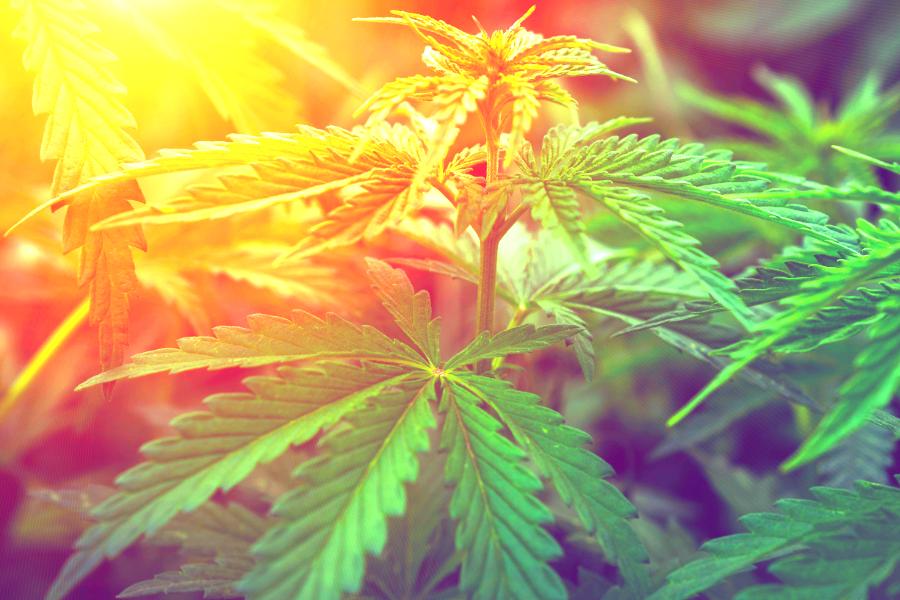
The importance of regulation and standardization in ensuring safe and effective use
As cannabis continues to gain recognition as a potential harm reduction tool, Dr. Grinspoon and Dr. McNabb stress the importance of regulation and standardization in ensuring its safe and effective use. Currently, the lack of federal oversight and the patchwork of state-level regulations have created a complex and often confusing landscape for patients, healthcare providers, and researchers alike. "Nobody whatsoever is regulating them. Nobody is regulating the hemp-derived CBD products either. You're delta-8s, you're delta-10s. So those are very dangerous because there's literally no adult in the room regulating any of this stuff," Dr. Grinspoon warns.
To address these challenges, Dr. Grinspoon and Dr. McNabb advocate for the development of clear, evidence-based guidelines for the use of cannabis in medical contexts, as well as the implementation of rigorous quality control standards for cannabis products. By ensuring that patients have access to consistent, high-quality cannabis products and that healthcare providers have the knowledge and tools needed to guide their use, regulators can help to maximize the potential benefits of cannabis while minimizing its risks. Additionally, standardization of cannabis products and dosing would facilitate research efforts, allowing for more precise and replicable studies on the effects of specific cannabinoids and dosages.
Conclusion
Recap of the key points
The "Cannabis as an Alternative" webinar, featuring Dr. Marion McNabb and Dr. Peter Grinspoon, has provided valuable insights into the potential of cannabis as a harm reduction tool in the context of the opioid crisis and other substance use disorders. Through their research and clinical experience, Dr. McNabb and Dr. Grinspoon have highlighted the widespread use of cannabis as an alternative therapy for a range of health conditions, including chronic pain, anxiety, and opioid use disorder. They have also discussed the potential of cannabis to reduce the use of more harmful substances, such as opioids, benzodiazepines, and alcohol, thereby mitigating the risks associated with these substances.
However, Dr. McNabb and Dr. Grinspoon have also emphasized the importance of considering the limitations and challenges associated with the use of cannabis in medical contexts. They have stressed the need for more balanced research on the benefits and harms of cannabis, as well as the development of evidence-based guidelines for its use. Additionally, they have highlighted the importance of regulation and standardization in ensuring the safe and effective use of cannabis products, as well as the need for healthcare providers to be equipped with the knowledge and tools needed to guide their patients in the use of cannabis for specific medical conditions.
The potential of cannabis as a harm reduction tool in the opioid crisis
The opioid crisis continues to take a devastating toll on individuals, families, and communities across the United States. Despite efforts to address this crisis through traditional medical and policy approaches, overdose deaths and other harms associated with opioid use remain at alarming levels. In this context, the potential of cannabis as a harm reduction tool has emerged as a promising avenue for reducing the negative consequences of opioid use and supporting individuals in their recovery.
As highlighted by Dr. McNabb and Dr. Grinspoon, cannabis has shown potential in reducing opioid use and mitigating the symptoms of opioid withdrawal, as well as in addressing the underlying conditions that often contribute to opioid use, such as chronic pain and mental health disorders. By offering a safer alternative to opioids and other harmful substances, cannabis may help to reduce the risk of overdose and other adverse outcomes associated with substance use. However, it is important to recognize that cannabis is not a panacea, and its use should be carefully considered in the context of each individual's unique needs and circumstances.
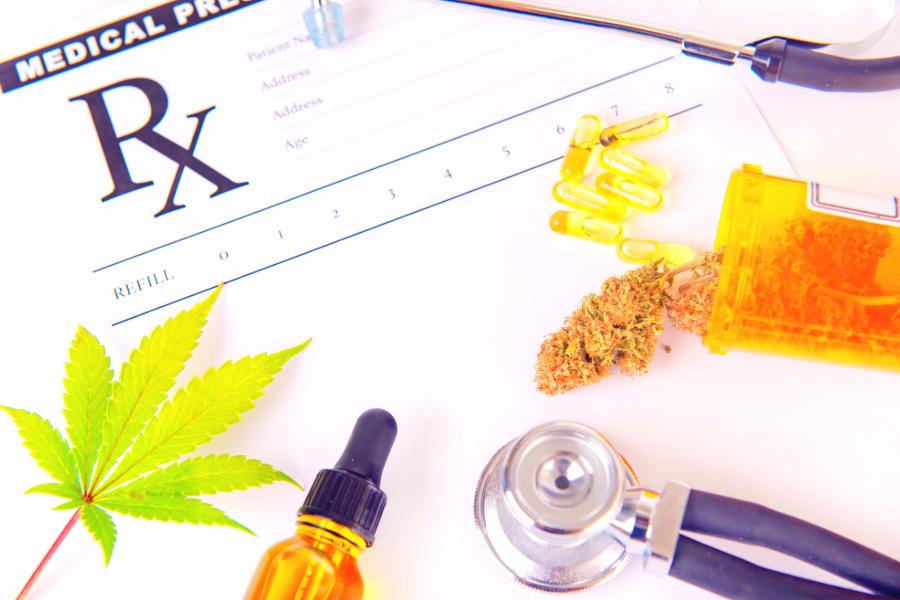
The need for continued research, education, and policy reforms to optimize the use of cannabis in addressing the opioid epidemic
As the conversation around cannabis as a harm reduction tool continues to evolve, it is clear that there is a need for ongoing research, education, and policy reforms to fully realize its potential in addressing the opioid epidemic. On the research front, it is essential to continue investigating the specific mechanisms by which cannabis may help to reduce opioid use and support recovery, as well as to identify the optimal dosages and formulations for specific medical conditions. Additionally, research is needed to better understand the long-term effects of cannabis use and to develop strategies for minimizing its potential harms.
In terms of education, it is crucial that healthcare
providers, policymakers, and the general public have access to accurate
and up-to-date information on the potential benefits and risks of
cannabis use. This includes the development of evidence-based guidelines
for the use of cannabis in medical contexts, as well as the
dissemination of information on the relative harms of different
substances and the importance of harm reduction approaches. Finally,
policy reforms are needed to address the current barriers to research
and patient access, as well as to ensure the safe and equitable
distribution of cannabis products. By working together to advance
research, education, and policy in this area, we can optimize the use of
cannabis as a tool for reducing the harms associated with the opioid
epidemic and supporting individuals on their path to recovery.











